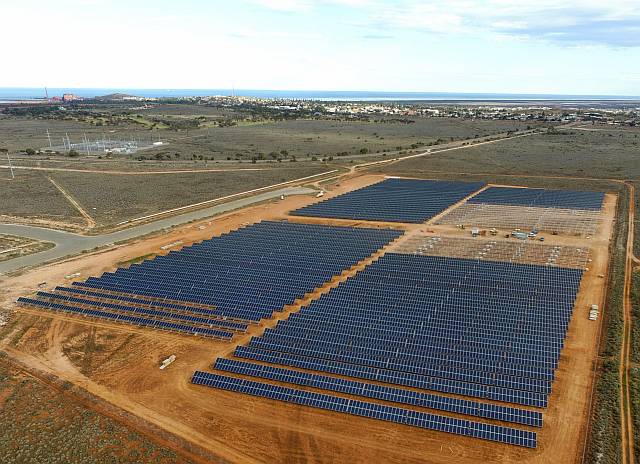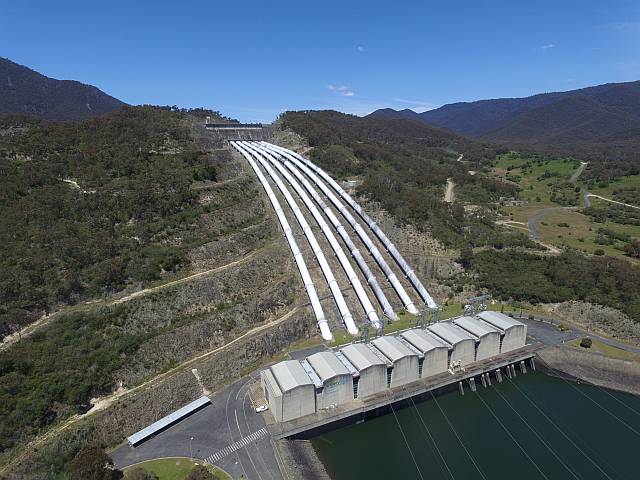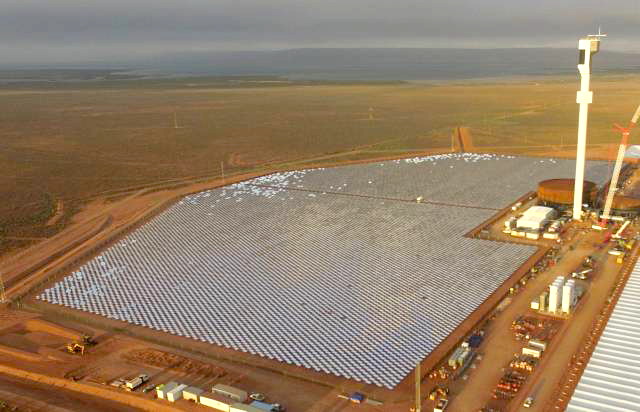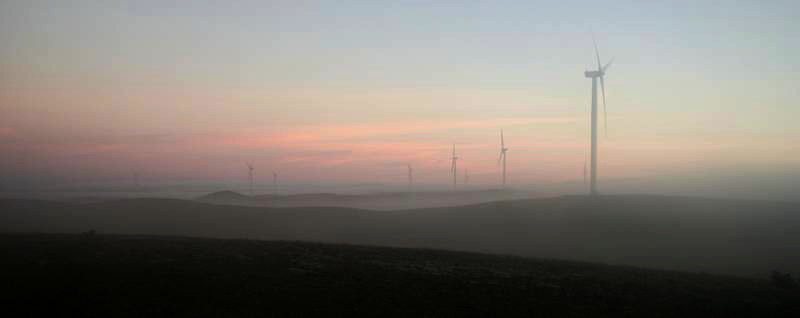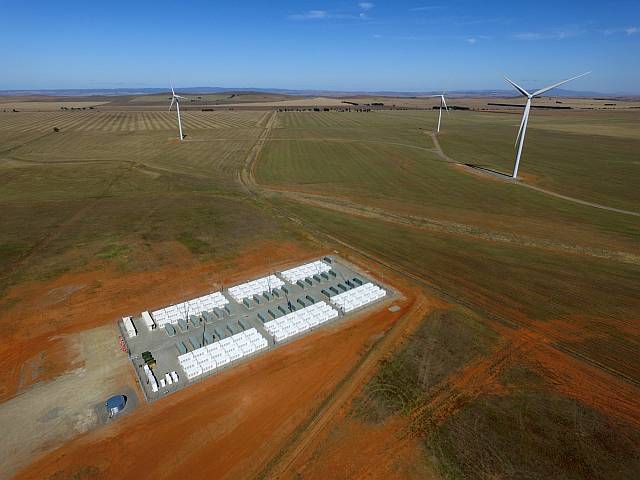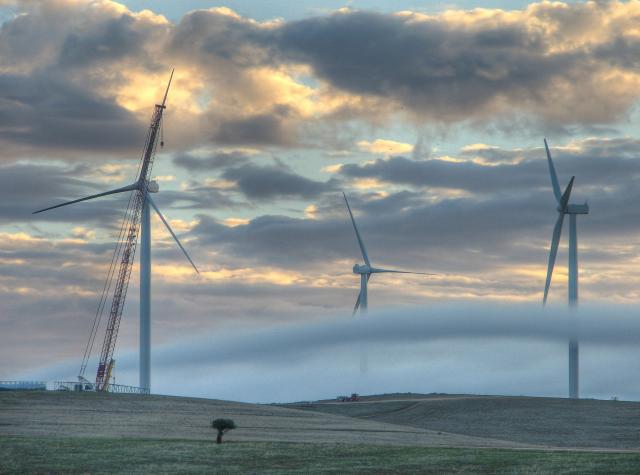Whyalla
|
Adani, a company better known for its coal mining has proposed another solar PV farm. It seems that even Adani can see that the world is moving away from fossil fuels toward renewable energy. Adani's Internet site states that they have lodged a Development Approval application. I believe they are working toward a $250 million 160 MW solar power station.
And Sanjeev Gupta, who heads GFG Alliance the company that has taken over the Whyalla steelworks and has bought a controlling interest in Zen Energy, plans a renewable energy development involving solar power and pumped hydro energy storage.
Nyngan Solar Farm was the biggest in
Australia at the time of writing, but the proposed solar farm at Whyalla will be bigger, and Bungala solar farm (now completed) at Port Augusta, is bigger again, at 275 MW DC, 220 MW AC.
Between Whyalla and Port Augusta
|
Ross Garnaut and Zen Energy have proposed a similar development in the same area.
A group in the Australian National University, headed by Professor Andrew Blakers, is also looking into the potential for pumped hydro energy storage in Australia.
Pictured at the right is one of a very few hydro-power stations combined with pumped-hydro energy storage currently in Australia (it is in NSW, not South Australia).
When electricity is plentiful and cheap it is used to pump water from the lower to the upper storage, in effect storing the energy from the electricity in the water. When demand increases or generation declines, the water is allowed back down through the turbines to generate more electricity.
Some 97% of the world's energy storage in 2017 is in the form of pumped hydro. The main advantage that batteries have over pumped storage is that a big battery bank can be built in six months, while a pumped storage system will take something like three years. In a nation like Australia, with no effective energy policies coming from the federal governments, the long-term planning needed for new pumped hydro projects has been sadly lacking.
|
|
|
Port Augusta
|
- Operating:
- Bungala solar farm (photo-voltaic, PV)
- Lincoln Gap Wind Farm
- Sundrop Farm (Solar-thermal powered greenhouse)
- Awaiting connection (as of December 2021)
- Port Augusta Renewable Energy Park (wind and solar PV)
- Proposed
- A company named 1414 Degrees has proposed to use solar PV combined with its molten silicon energy storage technology at the site that was proposed for the SolarReserve Aurora Solar Energy Project. As of November 2019 the proposal had few details. See RenewEconomy.
- An even bigger battery than the Hornsdale Power Reserve, for more information see Ecogeneration
The people and council of Port Augusta have for years pressed for the construction of a solar thermal power station with energy storage. (I took part in walk of over 300km from Port Augusta to Adelaide with a group of about 70 people, organised by the Australian Youth Climate Coalition, back in 2012 to push for a solar thermal power station.)
There is a proposed windfarm nearby, the
Port Augusta Renewable Energy
Park.
It is intended to have a maximum generating capacity of 375 MW and
will combine wind turbines with solar PV.
Bungala solar farm, Port Augusta
| Bungala Solar Farm, Stage 1, under construction |
|---|

|
|
|

|
|
|
|
There is a map showing the location of Bungala Solar Farm and a short note on how to get to it on
another page on this site and on
Power Technology's web page.
|
Bungala solar farm, completed
|
|---|

|
Photo taken by my Mavic Mini drone, 2020/03/26.
Click on image to view full size, 'back' to return |
|
|
Port Augusta Renewable Energy Park, including wind farm
Pt Augusta Energy Park under construction, 2021/05/05
|
|---|

|
Photo taken using my drone. At the time of my visit there were 8 complete turbines, 8 partly constructed towers, and the turbine seen here being completed. Sundrop Farm can be seen on the far right. (Click on the image to see in high resolution.) |
Peterborough
|
Renew Power was intending to start construction of a further 90 MW of solar PV in SA and NSW in the same year, 2018.
Peterborough Solar Farm
|
|---|

|
|
Photo taken with my drone, 2018/05/12 |

|
|
Photo taken from ground level, 2018/05/10 |
Port Pirie
|
It is to cover 15 ha and is expected to generate "more than 10,000 MWh" annually. Construction was expected to start by June 2018 and take 16 weeks. Renew Power Group director, Kevin Heydt, was reported as saying that "We are confident it will be up and running this year".
|
|
Iron Triangle
|
Coober Pedy
|
ARENA (Australian Renewable ENergy Agency) has partly funded this project.
|
|
